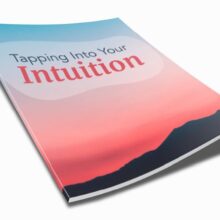How Practicing Mindfulness Can Change Your Life
How Practicing Mindfulness Can Change Your Life
You’re driving down the highway, coffee mug in one hand, listening to the news on the radio and shuttling your kids to school. You’re thinking about work, your kids are asking you questions and your cell is ringing. Then at a stop light you notice the car in front of you has a bumper sticker with the words “Be Present.”
Be Present. More and more, as we multi-task and juggle projects and struggle to balance work and school, we’re simply not present. “Life moves pretty fast. If you don’t stop and look around once in a while, you could miss it.” Ferris Bueller said that years before we even had cell phones and social media to distract us. It’s good advice.
Research has shown that people who multitask are less effective in their work, with an overall lower productivity. Multi-taskers have been known to make more mistakes. Research also suggests that scientists are learning that mindfulness can have a measured effect on the brain. Researchers say that practicing mindfulness — that is, paying attention to the here and now, being present and focusing on the breath – has a myriad of benefits.
Browse more Custom Photo Plaques
The creator of MBSR (Mindfulness Based Stress Reduction), MIT-educated scientist Jon Kabat-Zinn, theorized that mindfulness training could help patients refocus their attention so that, although they might still have chronic pain, they could change their response to the pain and reduce their overall suffering. Participants in his study reported that their pain levels had decreased significantly. Others found that although the pain remained, they were better able to handle the stress of living with illness.
Mindfulness training has been shown to:
* Improve health
* Lower blood pressure
* Decrease cortisol levels
* Ease anxiety, stress and depression
* Increase immune response
* Affect the brain, counteracting what happens to our minds because of stress.
* Improve memory and focus
What to do:
1. Mindfulness meditation – Set a timer for 20 minutes (you might want to try for 5 minutes and then build up). Then sit still, focus on the breath, and specifically notice the sensation of the air moving in an out of your lungs. Is it shallow or deep? Fast or slow?
While you’re focusing on breathing, notice any thoughts that come to mind, but try to let them go. If you recognize you are thinking, say to yourself “THINKING” and then go back to the breath. Note that it’s absolutely normal to have a multitude of thoughts running through your brain at any given time. The trick is, if you can recognizes that you are thinking and take note of what the thought is, you’re becoming mindful and that’s the first step toward mindfulness. Some experts recommend ten minutes per day for a week, and building up to more time as you become more comfortable.
2. Mindful waking – Other exercises in mindfulness include exercises such as walking slowly around a room. Notice how your heel meets the floor, where the rest of your foot steps and how it feels. Or eat a food such as a raisin, but do so mindfully. Notice the wrinkles, notice its smell. When you put the raisin on your tongue, notice the taste, feel and texture before you begin to slowly chew.
Whether you’re overwhelmed with your life or simply want to take a break from the constant distractions of cell phones and social media, mindfulness is worth a try. The benefits are huge and all it takes is a little bit of focus and breath.
Here is a related resource about “Setting Personal Goals“.
Personal Development Ebook: |
| Why spend the rest of your life letting another person or deed control your every waking moment? Isn’t it time to take back your life, leave the disappointment and bitterness behind and be in complete control? Forgiveness is part of the plan.
This 28-page ebook will provide the information you need. Also includes a 4-page Checklist. Instantly downloadable. For personal use only. More details… |







